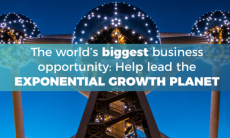Even though binary representation is nothing new, being invented in the 17th century, and early reasonable manifestations in Ancient Egypt and China – think Yin and Yang as one of the oldest representations of zeroes and ones – the actual digitalization of the world started sometime in the middle of the 20th century, as computers started their ascension into our daily lives. By the late 1980s, compact discs started becoming popular and that was just a glimpse of the everything-is-going-digital world we live today, where your pictures, movies, books, IDs, tickets, wallet and even financial advisors can all be represented in binary format.
The move to a binary world has not always followed a straight line. By moving song recordings to CDs, we enabled the now old Napster revolution, which led to the proliferation of MP3 players, the iPod, smartphones, and now song streaming, which is ironically somewhat similar to the way our great-grandparents used to consume music almost hundred years ago – old radio is primarily a streaming device. During that journey, we tried out a model based on possession and storage of digital content, mimicking the way we used to buy and keep albums from our favorite artists, but it was so awkward and restricting that we pretty much gave up on it and now rely on all-you-can-eat subscription models.
The core issue with digital content is that anything that can be converted to a binary representation can also be easily replicated infinite times. No matter how complex of a Digital Rights Management mechanism you develop, at some point it needs to be unlocked to render the original content, and at that point, it can be copied. Becoming digital meant being easy to store, copy and transmit. And the only mechanisms to contain widespread piracy and dissemination of false information have been very non-digital in nature: constant monitoring, law enforcement and good citizenship. Many used the motto “information wants to be free” to describe this new world of limitless copying and distribution of binary content.
However, there are many things in our analog world that must rely on a single copy, or single-version-of-the-truth to work: money, property titles and voting are likely the most obvious ones. A dollar, a house title or my vote for the next elections should not have simultaneous, conflicting digital representations floating around. As these goods are used and exchanged, a reliable universal record of those transactions needs to exist for the systems built on top of them to continue operating.
That’s why technologies like Blockchain have been all over the news the last few years. While still far from perfect, they try to address the issue of making digital entities to behave more like their atom counterparts we used for thousands of years. While technically speaking they are still relying on digital representations, the intent there is to remove some of the very qualities typically associated with digital goods. In other words, Blockchain-like technology tries to ensure that some virtual items have scarcity associated to them, and that changes to those items are recorded in a way that nobody can tamper with. To some extent, they are trying to undo some of what was made possible via the digital revolution of the last 20 years. Not all information wants to be free, after all.






